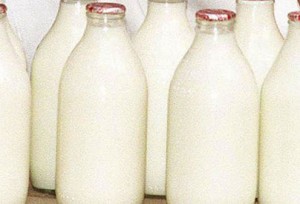Fonterra reduces Farmgate price
 Fonterra has reduced its forecast Farmgate Milk Price for the 2015/16 season from NZ$4.15 per kgMS to $3.90 per kgMS.
Fonterra has reduced its forecast Farmgate Milk Price for the 2015/16 season from NZ$4.15 per kgMS to $3.90 per kgMS.
When combined with the forecast earnings per share range of 45-55 cents, this means a total forecast available for payout of $4.35-$4.45 per kgMS and would currently equate to a forecast Cash Payout of $4.25-$4.30 per kgMS for a fully shared-up farmer after retentions.
Fonterra is forecasting its New Zealand milk production to be at least 4% lower than last season as New Zealand farmers respond to the ongoing low prices by reducing herd size and feeding significantly less supplementary feed which is expected to have an impact on this autumn’s production.
Chairman John Wilson said difficult conditions in the globally traded dairy market have put further pressure on the forecast.
“This further reduction in the forecast Farmgate Milk Price is the last thing farmers want to hear in what is proving to be a very challenging season,” said Wilson. “At times like this the business needs to do everything it can to drive every last cent back to farmers. Management is fully focused on reducing cost and generating cash right across the business. The continuing lift in financial performance and our balance sheet strength will provide opportunities to support our farmers’ cash flows. We will provide an update on this at our interim results on March 23.”
Chief Executive Theo Spierings said dairy exports and imports had been imbalanced for the past 18 months due to European production increasing more than expected, and lower imports into China and Russia – the two largest importers of dairy.
“The time frame for a rebalancing has moved out and largely depends on production reducing – particularly in Europe – in response to these unsustainably low global dairy prices,” said Spierings.
“The long-term fundamentals for dairy are positive with demand increasing at over 2 per cent a year due to the growing world population, increasing middle classes in Asia, urbanisation and favourable demographics. Our forecast is based on no significant changes to either supply or demand globally before the end of the year. However, a reduction in the supply available for export before then could mean prices recover earlier than currently expected.”


































